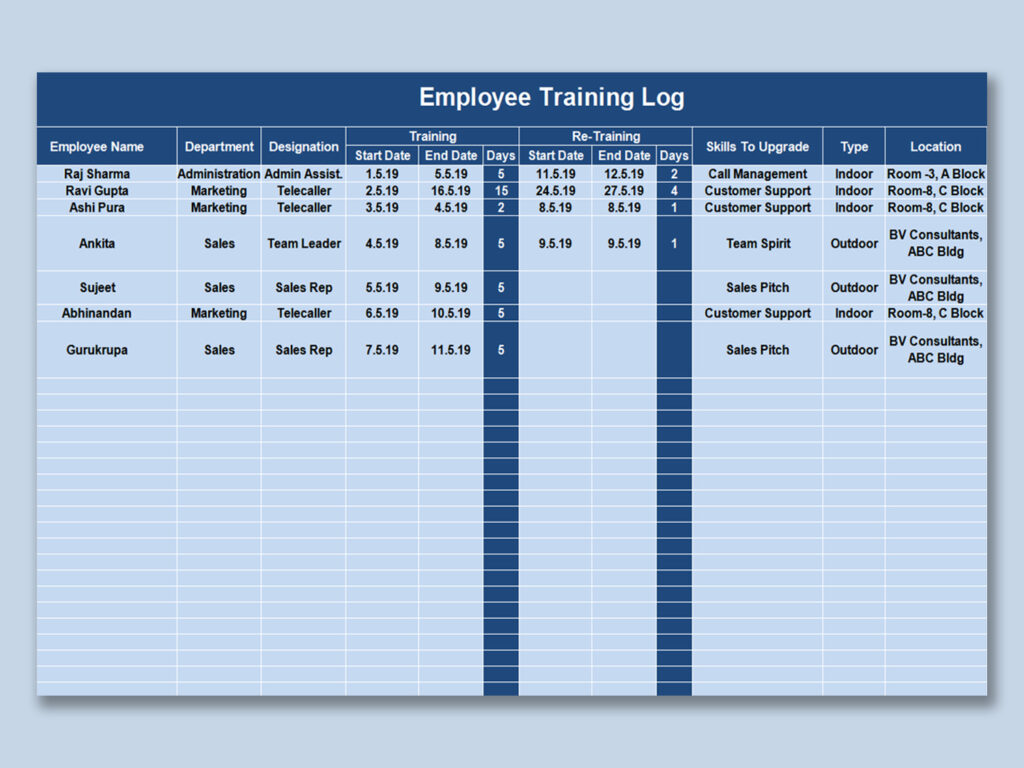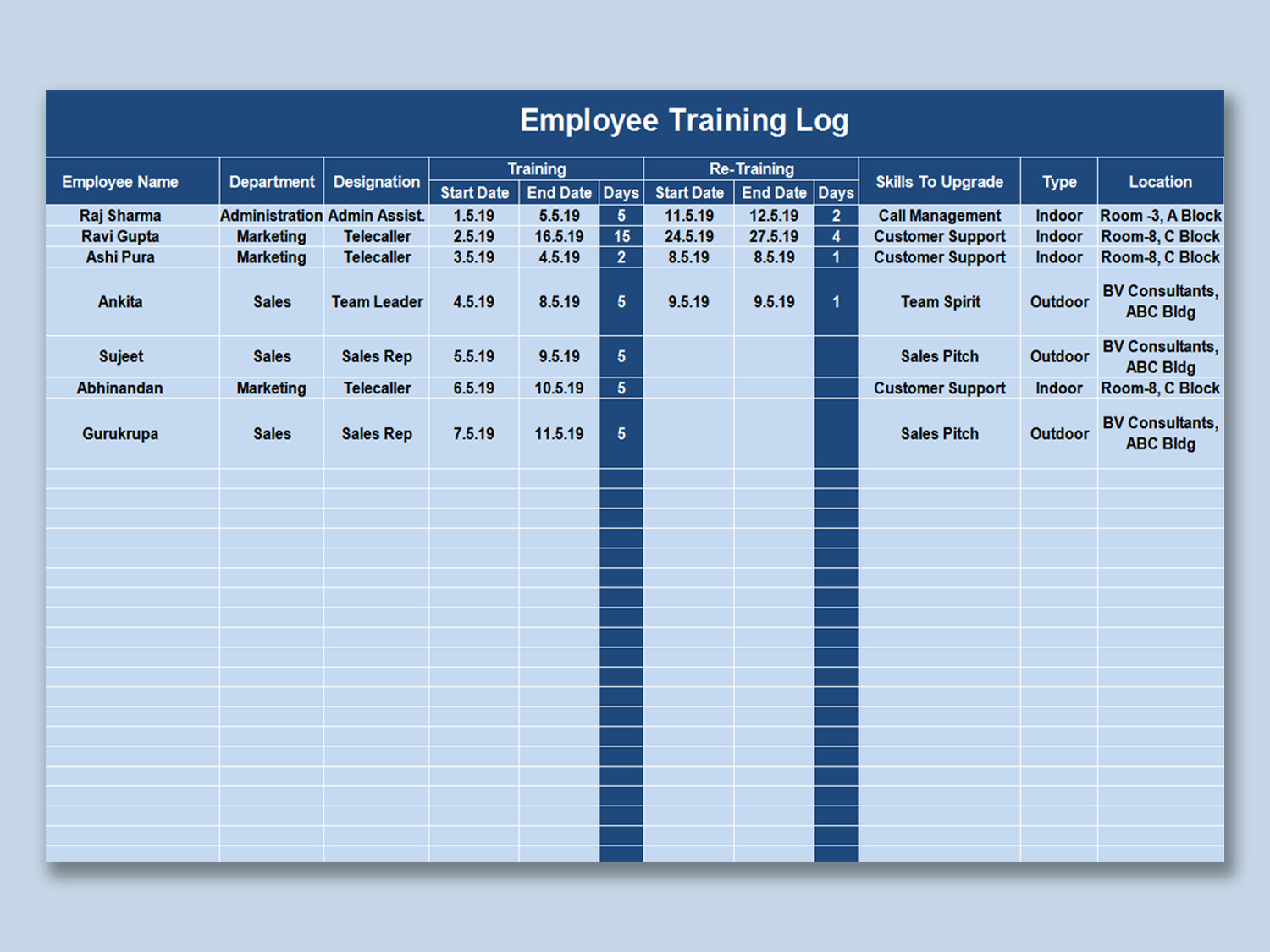
Streamline HR: The Ultimate Guide to Employee Information Spreadsheets
In today’s fast-paced business environment, efficient management of employee data is paramount. An employee information spreadsheet serves as a foundational tool for HR departments and business owners, enabling organized tracking and easy access to vital workforce details. This comprehensive guide delves into the intricacies of creating, maintaining, and leveraging an employee information spreadsheet for optimal HR management.
Why Use an Employee Information Spreadsheet?
While sophisticated HR software solutions exist, an employee information spreadsheet offers several advantages, especially for small to medium-sized businesses. These include:
- Cost-Effectiveness: Creating a spreadsheet requires minimal investment compared to purchasing and implementing HR software.
- Customization: Spreadsheets can be tailored to meet specific organizational needs and data requirements.
- Ease of Use: Most individuals possess basic spreadsheet skills, making it easy to create, update, and share information.
- Accessibility: Spreadsheets can be stored locally or on cloud platforms, ensuring easy access for authorized personnel.
Essential Elements of an Employee Information Spreadsheet
A well-designed employee information spreadsheet should include key data points that are crucial for HR functions. Consider incorporating the following elements:
Basic Employee Details
- Employee ID: A unique identifier for each employee.
- Full Name: Employee’s first, middle, and last names.
- Date of Birth: Employee’s birthdate.
- Contact Information: Phone number, email address, and physical address.
Employment Information
- Job Title: Employee’s current position within the company.
- Department: The department or team the employee belongs to.
- Date of Hire: Employee’s start date.
- Employment Status: Full-time, part-time, contractor, etc.
- Salary/Hourly Rate: Employee’s compensation details.
- Manager: Name of the employee’s direct supervisor.
Compensation and Benefits
- Salary/Hourly Rate: Employee’s compensation details.
- Benefits Enrollment: Information on health insurance, retirement plans, and other benefits.
- Paid Time Off (PTO) Balance: Tracking of vacation days, sick leave, and personal time.
Performance and Training
- Performance Review Dates: Dates of past performance reviews.
- Training Records: Records of completed training programs and certifications.
- Skills and Competencies: List of employee’s skills and areas of expertise.
Emergency Contact Information
- Emergency Contact Name: Name of the employee’s emergency contact.
- Emergency Contact Phone Number: Phone number of the emergency contact.
- Emergency Contact Relationship: Relationship of the emergency contact to the employee.
Creating Your Employee Information Spreadsheet: A Step-by-Step Guide
Follow these steps to create an effective employee information spreadsheet:
- Choose Your Spreadsheet Software: Select a spreadsheet program like Microsoft Excel, Google Sheets, or Apache OpenOffice Calc.
- Define Your Columns: Determine the data fields you need to track and create corresponding columns. Use clear and concise column headers.
- Format Your Data: Format the columns appropriately (e.g., date format for dates, currency format for salaries).
- Enter Employee Data: Populate the spreadsheet with accurate and up-to-date employee information.
- Implement Data Validation: Use data validation rules to ensure data accuracy and consistency. For instance, you can create a dropdown list for employment status options.
- Secure Your Spreadsheet: Protect the spreadsheet with a password and restrict access to authorized personnel only.
- Regularly Update Your Spreadsheet: Keep the employee information spreadsheet updated with any changes to employee data.
Tips for Effective Spreadsheet Management
To maximize the benefits of your employee information spreadsheet, consider these best practices:
- Use Consistent Formatting: Maintain a consistent format throughout the spreadsheet to ensure readability and data integrity.
- Implement Data Validation: Use data validation rules to prevent errors and inconsistencies.
- Regularly Back Up Your Data: Back up your spreadsheet regularly to prevent data loss in case of system failure or accidental deletion.
- Control Access: Restrict access to the spreadsheet to authorized personnel only to protect sensitive employee data.
- Automate Tasks: Explore spreadsheet features like formulas and macros to automate repetitive tasks.
- Use Conditional Formatting: Use conditional formatting to highlight important data points or flag potential issues.
Advanced Techniques for Employee Information Spreadsheets
Once you’ve mastered the basics, you can explore advanced techniques to enhance the functionality of your employee information spreadsheet:
Pivot Tables
Pivot tables allow you to summarize and analyze large datasets quickly. You can use pivot tables to generate reports on employee demographics, salary distribution, and other key metrics.
VLOOKUP
The VLOOKUP function allows you to retrieve data from one table based on a matching value in another table. This can be useful for pulling employee information from one spreadsheet into another.
Macros
Macros are automated sequences of commands that can be used to perform repetitive tasks. You can create macros to automate data entry, formatting, and reporting.
Charts and Graphs
Visualizing your employee data with charts and graphs can help you identify trends and patterns. You can create charts to display employee demographics, salary distribution, and other key metrics.
Security Considerations for Employee Information Spreadsheets
Protecting sensitive employee data is crucial. Implement these security measures to safeguard your employee information spreadsheet:
- Password Protection: Password-protect the spreadsheet to prevent unauthorized access.
- Access Control: Restrict access to the spreadsheet to authorized personnel only.
- Encryption: Consider encrypting the spreadsheet to protect the data from unauthorized access.
- Data Masking: Mask sensitive data fields to prevent unauthorized viewing.
- Regular Audits: Conduct regular audits to ensure data security and compliance.
Employee Information Spreadsheet Templates
Numerous free and paid employee information spreadsheet templates are available online. These templates can save you time and effort by providing a pre-built framework for your spreadsheet. However, ensure that the template meets your specific needs and data requirements before using it.
Transitioning from Spreadsheets to HR Software
As your business grows, you may find that an employee information spreadsheet is no longer sufficient to meet your HR needs. At this point, it may be time to consider transitioning to a dedicated HR software solution. HR software offers a wider range of features and functionalities, including:
- Automated HR Processes: Automate tasks such as payroll processing, benefits administration, and performance management.
- Employee Self-Service: Allow employees to access and update their own information.
- Reporting and Analytics: Generate comprehensive reports and analytics on employee data.
- Compliance Management: Ensure compliance with labor laws and regulations.
Choosing the right HR software is a critical decision. Consider factors such as your budget, business size, and specific HR needs when selecting a solution.
Common Mistakes to Avoid When Using Employee Information Spreadsheets
Even with careful planning, mistakes can happen. Here are some common pitfalls to avoid when using an employee information spreadsheet:
- Lack of Standardization: Failing to standardize data entry can lead to inconsistencies and errors.
- Insufficient Security: Not protecting the spreadsheet with a password or restricting access can compromise sensitive data.
- Infrequent Updates: Neglecting to update the spreadsheet regularly can result in inaccurate and outdated information.
- Over-Reliance on Manual Processes: Relying too heavily on manual processes can be time-consuming and prone to errors.
- Ignoring Data Validation: Failing to implement data validation rules can lead to data inconsistencies.
Conclusion: Mastering Employee Information Management
An employee information spreadsheet is a valuable tool for managing employee data efficiently and effectively. By following the guidelines and best practices outlined in this guide, you can create a robust and secure spreadsheet that meets your organization’s specific needs. Remember to prioritize data accuracy, security, and regular maintenance to maximize the benefits of your employee information spreadsheet. Whether you are a small startup or a growing enterprise, effective employee information management is essential for success. Consider your long-term needs and the potential benefits of transitioning to HR software as your company scales.
[See also: HR Software Comparison Guide]
[See also: Employee Onboarding Checklist]

